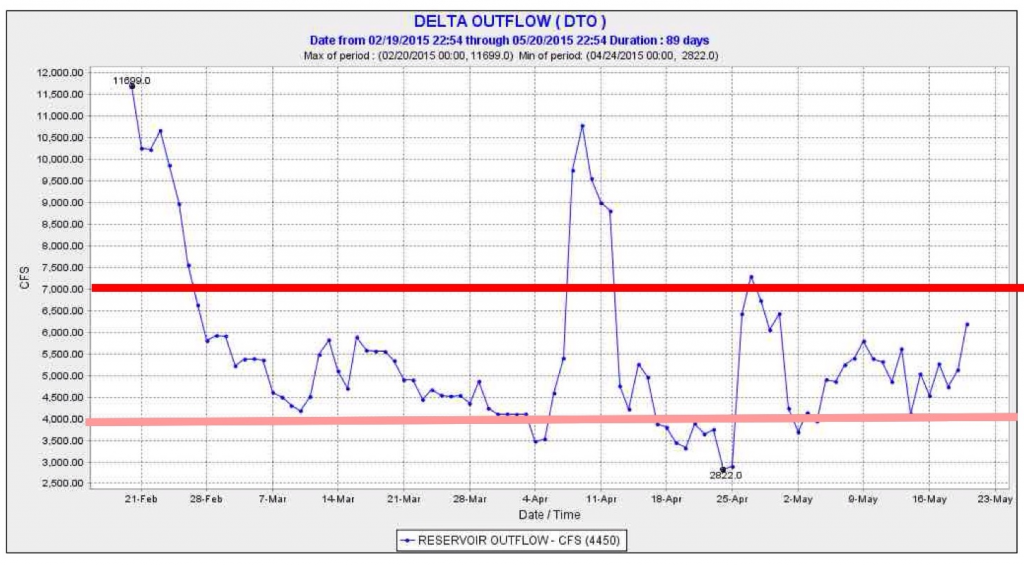Water quality standards under the jurisdiction of the State Water Resources Control Board provide bare minimal protections to the State’s major ecosystems in Critically Dry years. But with the extended drought in seven of the past nine years, protections have been weakened to the point where ecosystems and fisheries dependent on them have been devastated. Yes, rice acreage is down 25%1, but fish production is down 95%, with some species lost forever. Salmon numbers have been maintained by hatcheries and trucking hatchery production to the Bay, but not without a huge mortgage on future wild populations. Hatchery salmon already make up over 90% of ocean and river fisheries. Delta Smelt, Longfin Smelt, Steelhead, Green and White sturgeon, Striped Bass, and wild Chinook Salmon populations have declined another 90% in the past four years, after losing 90% in each in the past several decades. Farm production will return, but some fish will not. The ecosystem will return, but with a much different makeup of new food web plankton species from Asia, greater proportions of non-native sport and pan fish, and a greater assortment of the invasive aquatic plants that already fill waterways. The Delta will be featured more often on the Bass Masters Classic.
And what about the Bay? Only a few hundred thousand acre-feet of water of the millions released from reservoirs this summer will reach the Bay. Water quality and marine fish and shellfish will soon show signs of decline. The Bay-Delta is a major nursery for anchovies, herring, and Dungeness crab. Anchovy stocks are already collapsing2. Sea lions are starving and dying.
How hard would it be to at least maintain the antiquated minimum protections adopted in 1995 Bay-Delta Standards? The Bay is “allocated” a base of about 5 million acre-feet of water each year in the form of a base Delta outflow of 7,100 cfs. This standard for critically dry years is the first to suffer from State Board drought orders. The Board has reduced outflows requirements to 3000-4000 cfs (Figure 1). Such low outflows are in reality closer to zero (see earlier blog3). The amount of water “short” from the critical year base in the important February – June period is approximately 300,000 acre-feet. This amounts to less than 5% of the total 10 million acre-feet of reservoir releases into the Central Valley in 2014 and expected in 2015. The amount is less than 10% of the 5 million acre-feet presently in storage in Central Valley reservoirs. The water could be restored to the Bay by reducing water contractor allocations and/or reservoir storage.
The Delta had one plankton bloom that came and went this spring4. Plankton blooms are needed to drive the Bay-Delta food chain. Without freshwater flow to the Bay there will be no blooms and little food through the summer for Bay-Delta fishes. Water quality will suffer as well. The prognosis for the Bay-Delta and other California ecosystems is grim. California fisheries will suffer for decades to come.

Figure 1. Delta outflow as calculated by the California Department of Water Resources for Feb-May, 2015. Top red line represents 7100 cfs minimum standard. Lower red line represents typical weakened level of protection.
- Sacramento Bee reports tomato production reached 14 million tons last year, a record. Milk production revenue jumped 24 percent in 2014. http://www.sacbee.com/news/state/california/water-and-drought/article21958428.html ↩
- http://www.montereyherald.com/opinion/20150502/db-pleschner-west-coast-sardine-decline-science-vs-politics ↩
- http://calsport.org/fisheriesblog/?p=87 ↩
- http://calsport.org/fisheriesblog/?p=219 ↩














